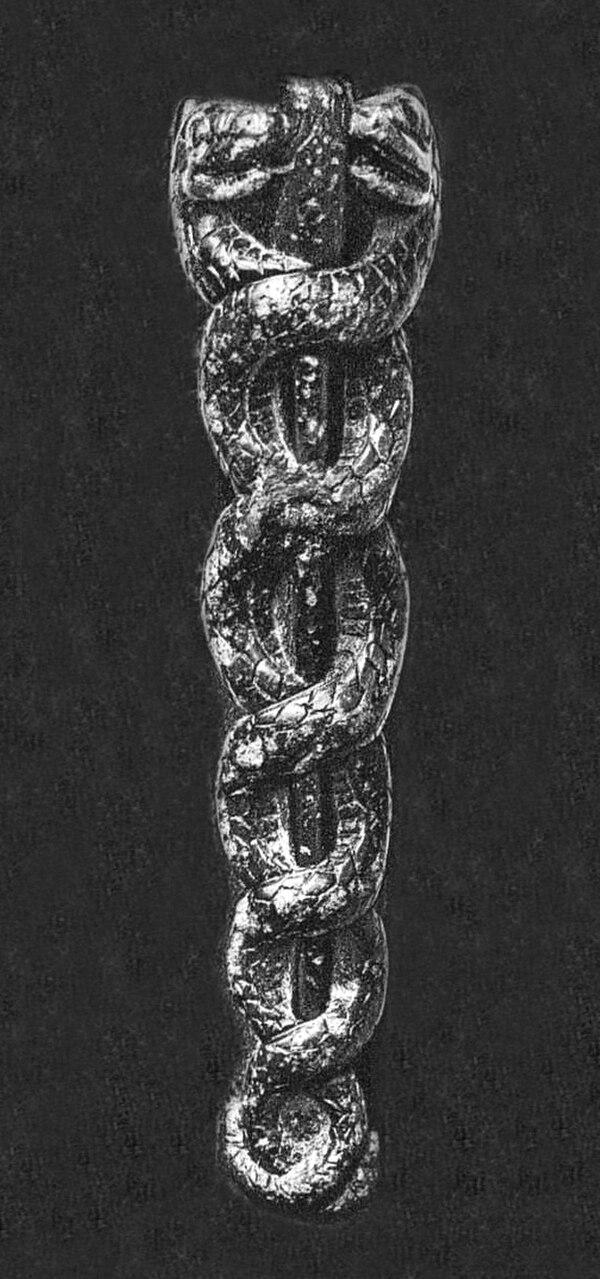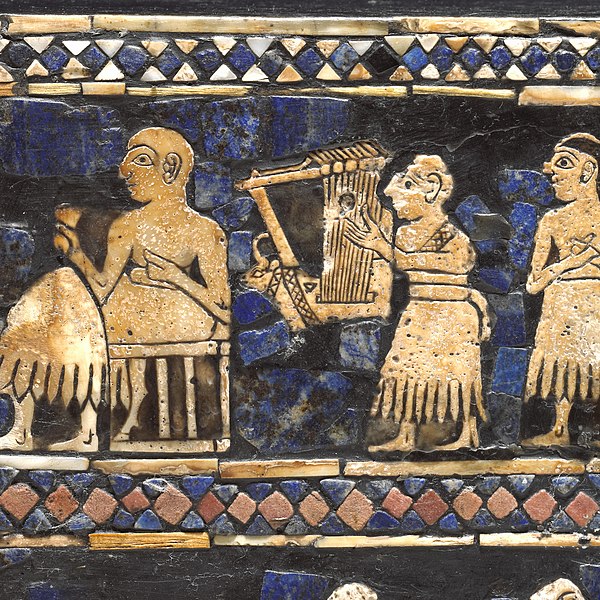Ningishzida
Videos
Page
Ningishzida was a Mesopotamian deity of vegetation, the underworld and sometimes war. He was commonly associated with snakes. Like Dumuzi, he was believed to spend a part of the year in the land of the dead. He also shared many of his functions with his father Ninazu.

Ningishzida, with snakes emanating from his shoulders, on a relief of Gudea, c. 2000 BCE

Ningishzida on the libation vase of Gudea, circa 2100 BCE

The "libation vase of Gudea" with the dragon Mušḫuššu, dedicated to Ningishzida, circa 2100 BCE (short chronology). The caduceus-like symbol (right) is interpreted as a representation of the god himself. Inscription: "To the god Ningiszida, his god, Gudea, Ensi (governor) of Lagash, for the prolongation of his life, has dedicated this"

The name Ningishzida inscribed on a statue of Ur-Ningirsu.
Ancient Mesopotamian underworld
Videos
Page
The ancient Mesopotamian underworld, most often known in Sumerian as Kur, Irkalla, Kukku, Arali, or Kigal and in Akkadian as Erṣetu, although it had many names in both languages, was a dark, dreary cavern located deep below the ground, where inhabitants were believed to continue "a transpositional version of life on earth". The only food or drink was dry dust, but family members of the deceased would pour sacred mineral libations from the earth for them to drink. In the Sumerian underworld, it was initially believed that there was no final judgement of the deceased and the dead were neither punished nor rewarded for their deeds in life.

Ancient Sumerian cylinder seal impression showing the god Dumuzid being tortured in the underworld by galla demons

Detail of the "Peace" panel of the Standard of Ur from the Royal Cemetery at Ur, showing a man playing a lyre. The Sumerians believed that, for the highly privileged, music could alleviate the bleak conditions of the underworld.

The "Queen of Night Relief" (c. nineteenth or eighteenth century BC), which is believed to represent either Ereshkigal or her younger sister Inanna

Terracotta plaque dating to the Amorite Period (c. 2000–1600 BC) showing a dead god (probably Dumuzid) resting in his coffin